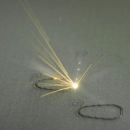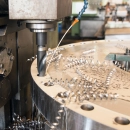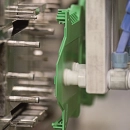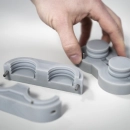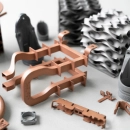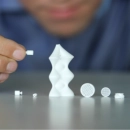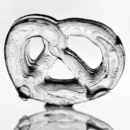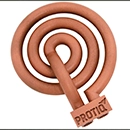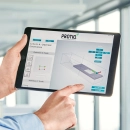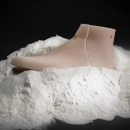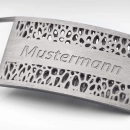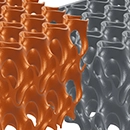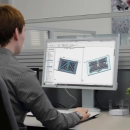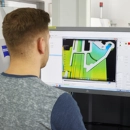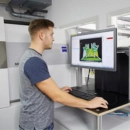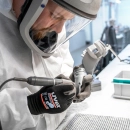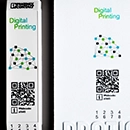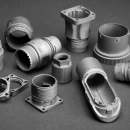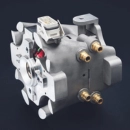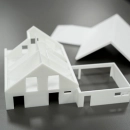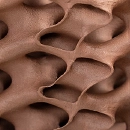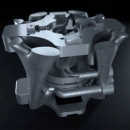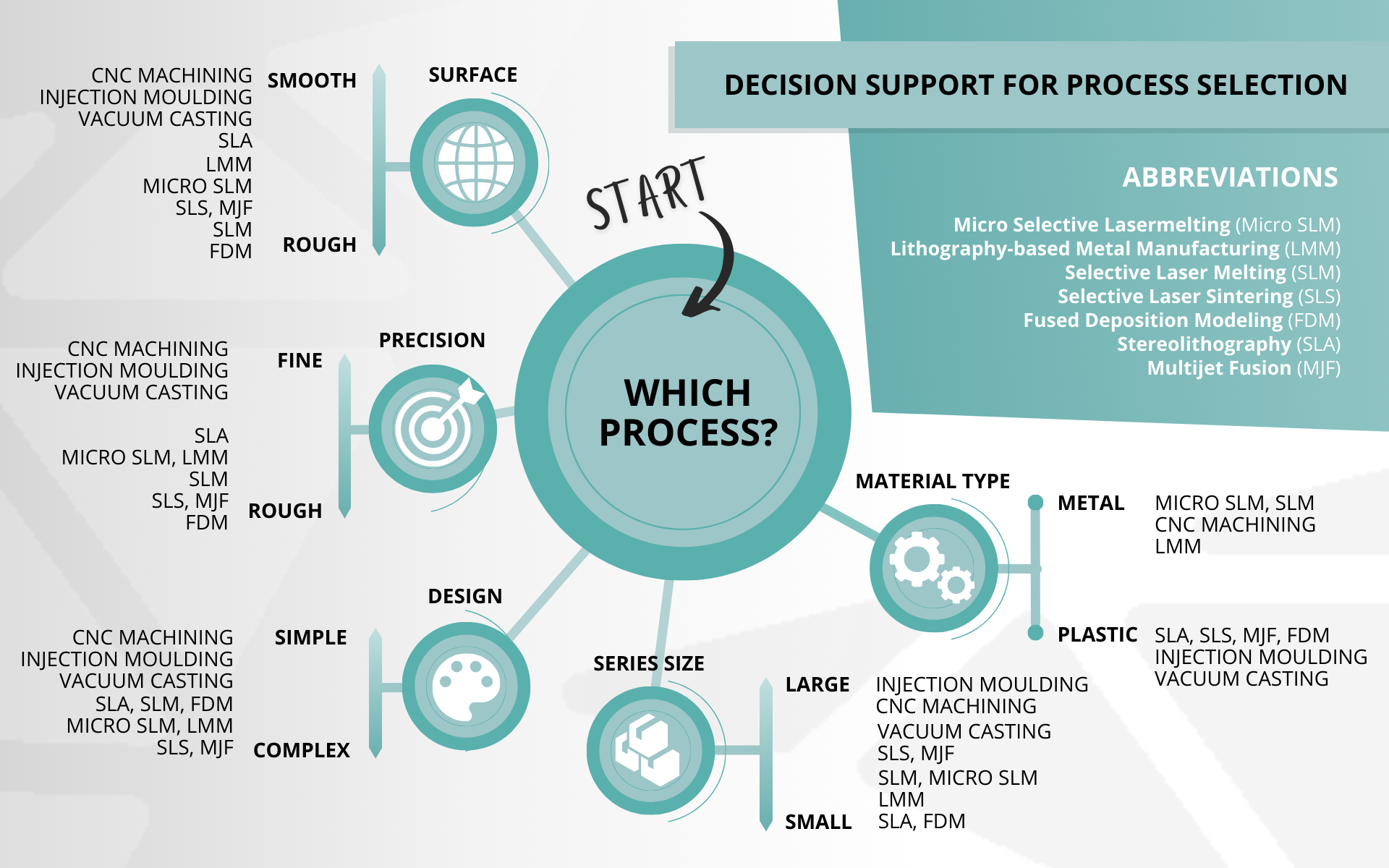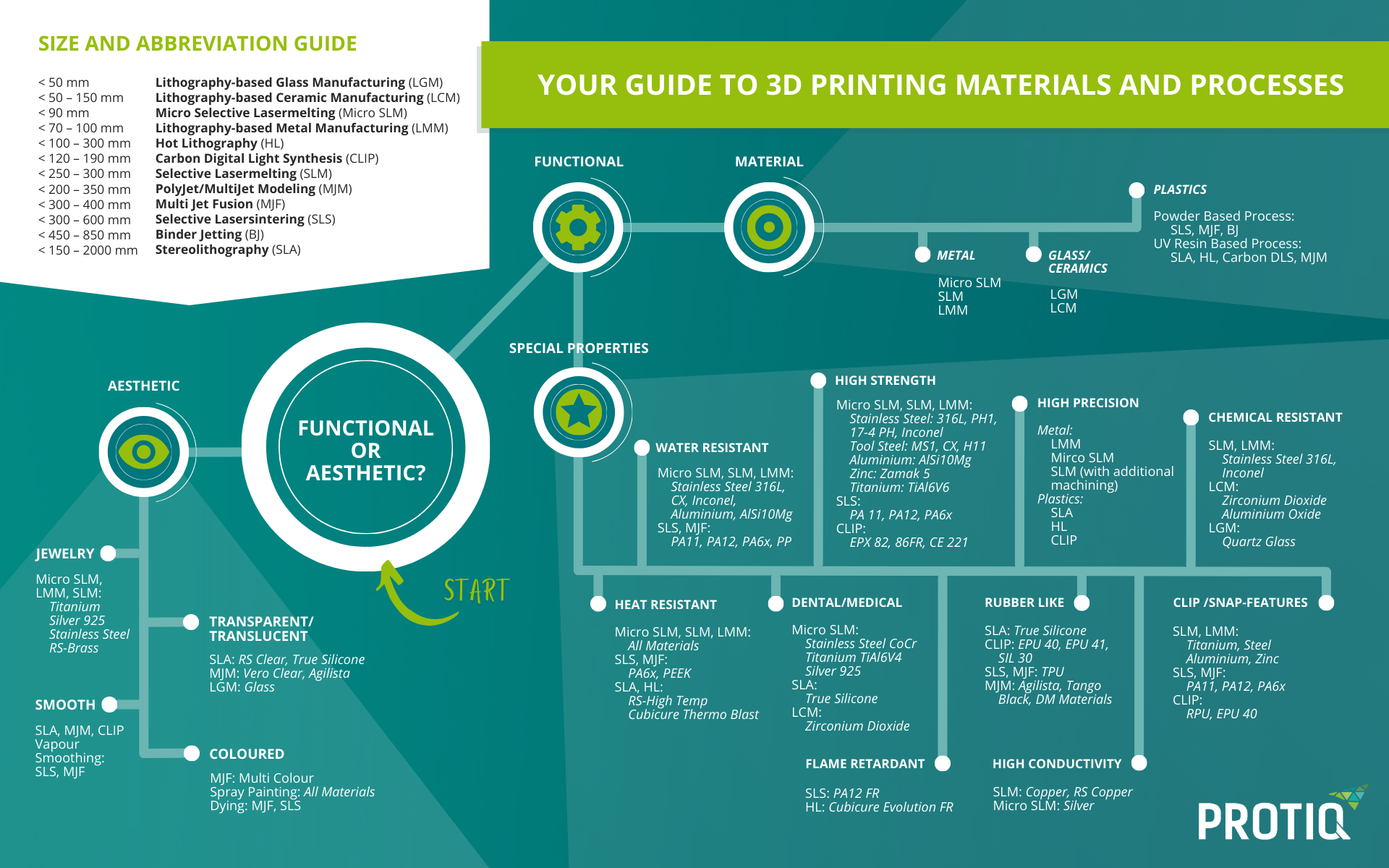Process guide
Additive manufacturing enables the layer-by-layer production of three-dimensional components. New materials open up a wide range of possibilities, from flame-retardant plastics to innovative metal materials such as pure copper or Zamak 5 (zinc). However, conventional manufacturing processes are also suitable for some projects. The PROTIQ Marketplace offers users an overview of established and new processes as well as transparent price comparisons.Guide to process selection
Additive manufacturing is subject to rapid and continuous development, opening up new possibilities and potential year after year. In the field of available plastic materials, for example, new materials enable the production of components with flame-retardant and ESD-dissipating properties.
Innovative metal materials such as pure copper or the series material Zamak 5 (zinc) also open up new opportunities for current-carrying applications or direct series production in combination with zinc die-casting.
However, this dynamic development is making it increasingly difficult for users to maintain an overview and to evaluate and utilise new potential. This is where the PROTIQ Marketplace provides support with a broad portfolio of established and new manufacturing processes as well as a direct comparison. Everything in one place, transparent and also directly comparable in price.
The right manufacturing process for every application
It goes without saying that it is extremely important to always consider and evaluate additive manufacturing in the context of traditional manufacturing processes. Only when an individual application with additive manufacturing processes proves to be economically advantageous compared to other manufacturing methods is a sensible implementation possible. This is usually the case for small and medium quantities or complex component geometries.
Simple geometries and simple shapes can often be produced by turning and milling. This is particularly the case when very high demands are placed on tolerances and precision.
For applications with particularly high quantities, on the other hand, manufacturing processes from the moulding sector are particularly suitable. For plastics, plastic injection moulding is used, which has long been established as the standard across all industries. Maximum quantities of several million parts are not uncommon here. Metal components in large quantities are usually manufactured using the zinc or aluminium die-casting process. The principle and quantities are similar to those in the plastics sector.
More about injection moulding >
Vacuum casting forms an intermediate link between additive manufacturing and large-scale production in plastic injection moulding. It is suitable for the production of small quantities up to medium-sized series. The process represents an opportunity to multiply the advantages of additively manufactured individual parts or small series to higher quantities. In addition, the 3D-printed geometry of a component can be combined with the advantages of a very wide range of possible material properties.



 Deutsch
Deutsch English
English Italiano
Italiano
